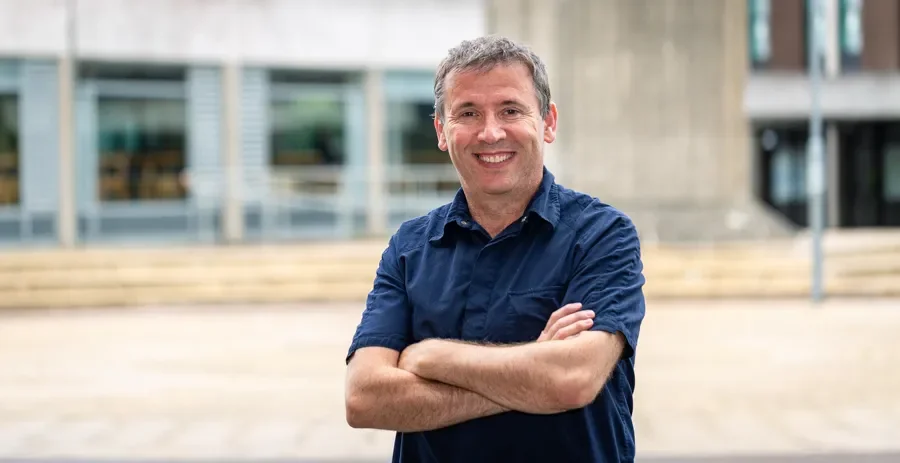

Spotlight on Research: Moving on up - the biomechanics of keeping humans active
This week’s Spotlight on Research is with Dr Kieran Moran, Associate Professor in DCU School of Health and Human Performance and Principal Investigator with the Insight Centre for Data Analytics.
What is your research about?
“I am interested in how humans move, and how to get them moving more effectively.”
How did you develop an interest in that?
“I played a lot of sport as a child, particularly volleyball, and I got into coaching at a young age. I wanted to understand how to improve people’s sporting ability and I also had a love of maths, so I studied biomechanics, which is the study of human movement.”
What are you working on now?
“A lot of different projects. They range from rehabilitation for people with cardiovascular disease to reducing running-related injuries to understanding how four-year-olds learn to ride a bicycle.”
What’s the heart one about?
“That’s called PATHWAY, it’s a €4.9m EU-funded project I am coordinating across 13 partners. After someone suffers a cardiac event and when they leave hospital they return as an outpatient for rehab for maybe 10 weeks, then they are recommended to continue exercising. There are wonderful community-based programmes, such as MedEx in DCU, but not everyone can attend them, or they may feel intimidated at the thought of exercising in front of others. The solution we are trialling is delivered at home. It uses a laptop where an avatar delivers exercise sessions and a Microsoft Kinect camera tracks the person’s movement. The exercise programme is tailored to the individual based on their goals and the medication they are on and perhaps any injuries or restricted ranges of movement. As they exercise, the system slows down if they can't keep up and gives them motivational feedback on their technique. It also monitors their heart rate and speeds up and slows down the exercise intensity to keep their heart rate in an ideal training zone, finishing the trial of 60 patients and 60 controls from two Dublin hospitals and one hospital in Belgium.”
What’s the hope for the trial?
“We hope that the system can encourage people to change their behaviours in line with what they need for their health. That might be reduction in stress, drinking less alcohol, stopping smoking or losing weight, the system is personalised to help with their specific needs.”
What about the running study?
“This is the biggest biomechanical study of its kind, we are recruiting 400 people for it and have 150 already. The rationale is that as many as 80% of all recreational runners get injured, maybe it’s painful knees or hips or back, and we are trying to understand the factors that are linked to those injuries. In our study, we can bring people into lab setting and analyse them to the millimetre, looking at how they move and how parts of the body are loaded when they run. Ideally, we would want to develop a wearable system that can give them feedback to change how they load their bodies and prevent injury.
Any ideas already about what causes these injuries?
“Nearly all injuries in running are caused by relative excessive loading, which means there is a lot of loading relative to the strength of the tissue. The biggest factor here is how hard people strike the ground. If people can soften their strike, it reduces the forces being transmitted through the body. Then technique has an effect too. One of our PhD students, Ciaran O'Cathain, has analysed this and we have developed an app that can measure how people are moving and deliver audio beeps to help them self-select a better technique to reduce the loads on their body.”
And what about the kids on bikes?
“That’s a project with a company called Yvolution, which produces balance bikes for children. One of our PhD students, Jennifer Kavanagh, has worked with young children around aged four to develop a programme that tests how the children transition from balance bikes to pedal bikes and compared that to transitioning from stabilisers to no stabilisers.”
What did she find?
“The balance bikes are more effective than stabilisers at preparing children for the pedal bikes. We think it is because the balance bikes allow children to move faster and to focus on balance and confidence.”
What do you do to get a break from research?
“I love spending time with my family, and I love having the time to read. I’m lucky that I research an area that I find fascinating, so I love reading around the topic. You are more likely to find me reading a research paper than a novel!”
